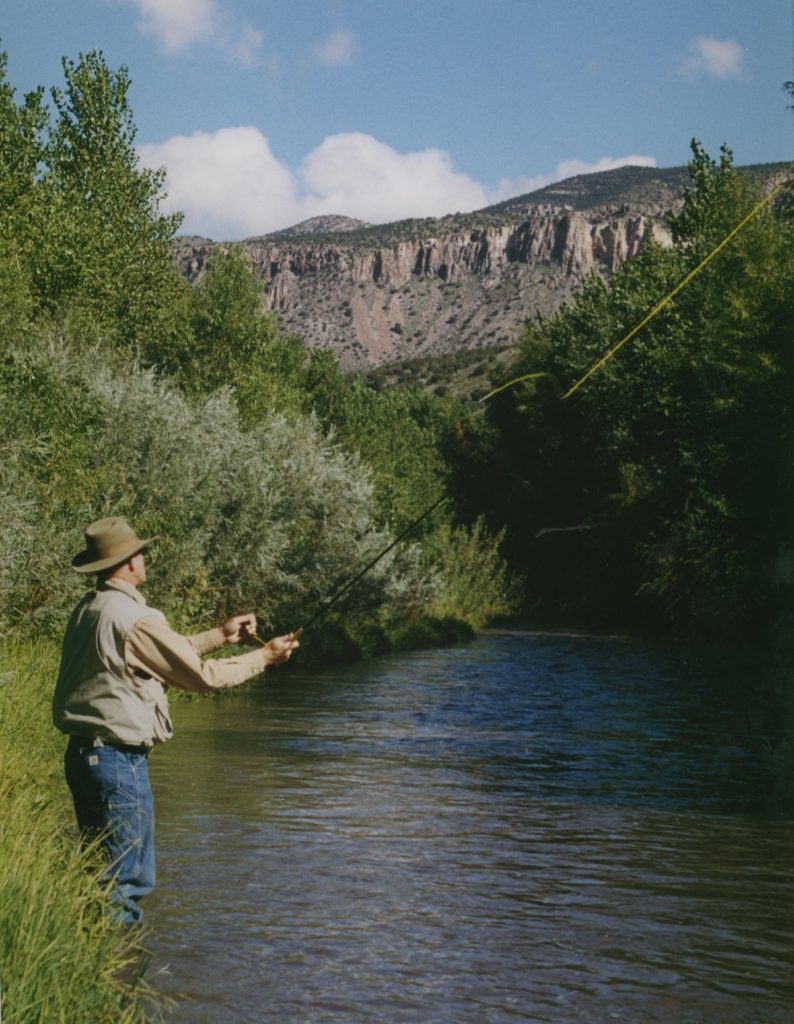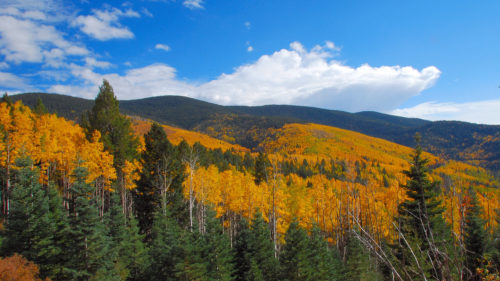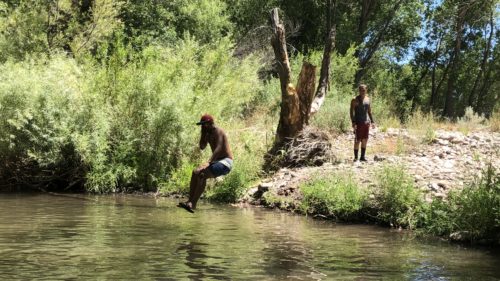Perhaps it’s a rite of passage . . . at different times in my fishing life I’ve been a trout snob, where nothing but trout would draw my interest or praise, a bass snob, and just to be contrary, a catfish snob. Each time it was an above average specimen of its kind that turned my head in a new direction: a 22” smallmouth on a brown wooly bugger from the Gila Wilderness; a 19” Gila trout on a Pistol Pete; a 47 lb blue catfish on cut bait, a real brute from the deep South. And while I like them all about the same now, I’m looking at two management techniques that could produce even larger fish: slot limits, and selective harvest.
Often employed to improve a bass fishery, the idea of the slot limit is either to protect, or harvest, the fish within a particular size range in order to improve fish numbers, or fish size, or fish “recruitment” (reproduction and growth to reproductive age). Or better yet all three in a given pond, lake, or stream.
Most states have some sort of slot limit for bass on at least some of their lakes or rivers but here in New Mexico we do not have slot limits for any of our sport species. The statewide bass regulation allows you to keep 5 bass per day with a minimum size limit of 12” for smallmouth bass (14” at Ute Lake) and 14” for largemouth bass statewide. This protects the younger fish but means the bigger bass — up to 5 per day — may be killed. One wonders if some sort of slot limit might leave us with more big bass?
I fish the Gila River often for smallmouth bass. By my experience, the river is full of 6-9 inch smallmouth, indicating good recruitment. There is the occasional lunker bronze bass — 18+ inches. When I catch one that size I let it go, but anecdotal evidence tells me that many anglers will keep and eat a big Gila bass. There’s nothing to stop anglers at Elephant Butte from killing and eating a bunch of trophy-size bass either. How might a slot limit affect bass size and numbers in Elephant Butte or the Gila River? The first thing to know is that there is both what I call a protective slot limit and a keeper slot limit and they can have markedly different results.

An example of a protective slot would be: you must protect by release all bass within the slot (say 12” – 16”) but you can keep 5 bass below or above the slot (less than 12” or more than 16”). An example of a keeper slot would be roughly the opposite: you can keep 5 bass between 12 – 16 inches but must release all bass less than 12 or more than 16 inches.
The protective slot would yield more bass of medium size but anglers would tend to keep the trophies. Big bass – 18” and up — would become scarce.
A keeper slot makes more sense for the “big game” angler. One place a keeper slot is being tried is the Winnibigoshish chain of lakes in Minnesota. There a limit of walleyes between 12 and 17 inches may be kept, but smaller and larger fish must be released. A recent report says that the Minnesota state fisheries people are finding the yield of 19 inch plus walleyes going from 20 percent to 40 percent of the take under the keeper slot.
And it seems that large fish will produce even larger fish. A study from the State University of New York at Stony Point was reported a few years back by Bob Marshall in Field & Stream.
“Researchers worked with three tanks of Atlantic silversides (a minnow-sized fish averaging about 6” long),” Marshall wrote. “They removed the largest 90 percent from one tank, the smallest 90 percent from another tank, and a random selection from the third. After four fish generations the average weight in the group where the largest fish were removed was 1.05 grams, compared to 3.17 grams in the random selection and a whopping 6.47 grams in the tank where only the smallest fish were removed.”
Thus, it would seem that the protection of trophy-size silversides, or bass, coupled with the removal (or selective harvest call it) of smaller individuals would yield even bigger silversides, or bass, in subsequent generations.
Selective harvest has worked this way on the Red River of the North that splits North Dakota and Minnesota on the way to Manitoba, Canada. There, native channel catfish up to 40 pounds were discovered some decades ago. But it got popular with anglers, and they were keeping these trophies. The average fish size went way down. What to do?
The two states got together and said: “You can keep 3 catfish per day but only one of these can exceed 24 inches.” In Manitoba, none of the channel cats kept could exceed 24 inches. With this simple regulation in place average catfish size began to climb year by year and this river is now the number one destination in North America for trophy channel cats.
Following this lead on the Gila, we could remove the bag limit on smaller bass (under 12”) but rule you can only keep one per day over 18 inches, or better still . . . none! The result? Fewer small bass but more lunkers.
Where might we set up such a slot limit for bass? The 7 miles of the Gila River between the Turkey Creek confluence and Mogollon Creek confluence, a lovely stretch of bass habitat with white water, deep blue-green pools, no vehicular traffic would be an obvious choice for smallmouth bass. And Elephant Butte and/or Caballo would be an obvious choice for the right slot limit for largemouth bass.
But the most spectacular gains in size and trophy status through the selective harvest and slot limits approach could be with a New Mexico native that few of our residents have ever caught – the big Blue Catfish. And I can reveal there appears to be an exciting change in catfish demographics in New Mexico.
“Along about 2003,” Eric Mammoser of New Mexico Game & Fish in Las Cruces told me, “we began to see more blue catfish in our electro-fishing surveys in the two reservoirs (Elephant Butte and Caballo).” Mammoser said the takeover by blue cats from the formerly plentiful channel catfish was dramatic.
“By 2007 our surveys were turning up more blues than channel cats,” Mammoser said, “and by 2013 we counted 50 channel cats and 452 blues electro-fishing at night at The Butte in coves and flats in 3 to 10 feet of water.” He added, “They come in there, in the shallows, at night to feed.” And he said the big ones were up around “forty pounds; but they get bigger than that . . . the state record is 54 pounds.”
And this trend continues. Last summer my son Bud and I fished the Butte for catfish and easily caught more blues than channel cats. No big ones, though! The blue cat USA record is 143 pounds from Buggs Island Lake in Virginia. Keep in mind that Virginia didn’t have any blue catfish until an introduction in the 1970s. Now the Potomac River running right through the nation’s capital is growing record breaking big blues! Virginia has a simple limitation on blue cat: per license, only one blue cat per day over 32 inches may be kept. And the record is broken every few years! Similar selective harvest of blues at the Butte could yield New Mexico’s first 100 pound fish.
The trend in fishing is away from the goal of a stringer full of dead fish and towards the capture of a trophy fish that is returned to the waters. Based on what I’ve seen so far, a keeper slot or that simple variation as on the Red River would work best for the Butte. And the Gila River, where natural reproduction and recruitment of bass doesn’t seem to be a problem, might be the best place for an experimental look at a slot limit, that could reduce the population of small bass in the river, but produce more trophy bass.



